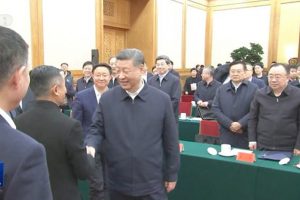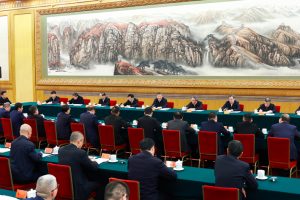(ATF) Chinese banks, once in danger of being shoved aside by Internet giants, are enjoying newfound popularity as Beijing cracks down on tech companies and their ventures into finance.
More traditional financial institutions in the country hope to reclaim lost business, such as consumer loans, from financial technology (fintech) players such as Alibaba-backed Ant Group.
New hurdles that have been created for online finance companies have encouraged bricks-and-mortar banks, which are likely to gain from regulatory rollbacks designed to create a more even playing field in consumer finance.
Since January 1, Chinese banks are no longer obliged to set daily compounding interest rates for credit cards between 0.035% and 0.05%. Some banks now plan to lower rates or even undercut online lending rates.
The new rules, such as restricting the ability of online companies to collect customer data, are part of the Chinese government’s “tougher and more suspicious regulatory stance toward the consumer internet”, says Ernan Cui, an analyst at Gavekal Dragonomics.
“Instead of allowing tech companies to freely enter new markets, China’s regulators are intervening earlier in the process to prevent negative consequences,” she added. “That shift could have big implications for these companies’ future growth prospects.”
ANTI-ANT MOVES
The regulatory sea change hit high water mark in early November 2020, when authorities cancelled Ant Group’s $37 billion initial public offering (IPO). The changes are expected to divert customers to the traditional banking system, especially to local banks.
“With higher interest rates allowed, smaller banks can be more tolerant of clients with a higher chance of default,” a bank manager told Reuters.
Internet lending facilitated by Chinese fintech heavyweights was virtually non-existent before 2014 but now accounts for up to 30% of the country’s consumer loans. China’s consumer loans market was worth $2.2 trillion in 2019, China Banking Association data show.
Ant, Tencent-backed WeBank and JD.com Inc have become powerful third-party intermediaries who draw in borrowers, take as much as a third of lending profit margins while the banks they partner with supply credit. Ant alone was involved in 1.7 trillion yuan of consumer loans as of end-June, its IPO prospectus showed.
The regulatory clampdown was in part prompted by the perceived hubris of Ant founder Jack Ma when he slammed China’s financial regulatory system in late October 2020, as well as growing concerns about internet lending practices. Easy access to loans were feared to be setting the stage for a mountain of defaults in a pandemic-hit economy.
One goal above all others
Over the past three years, China’s financial regulators have pursued one goal above all others: controlling financial risk. The de-risking agenda is still the top priority and no innovation is so important that it can be allowed to create financial instability. In December 2020, the China Banking and Insurance Regulatory Commission issued statements warning of the risks of over-lending by online lenders.
“Regulators intend to bring all online lending businesses back to bank balance sheets to better control risks,” an asset management executive told Reuters. “The profit margins for the loan facilitation business will gradually disappear, and banks are going to be the ultimate winners.”
Underscoring hopes for the banking sector has been a 7% rise in China’s banking subindex this year. China Merchants Bank, whose credit card business contributes almost a fifth of its interest revenue, has soared 18%.
With reporting by Reuters
























